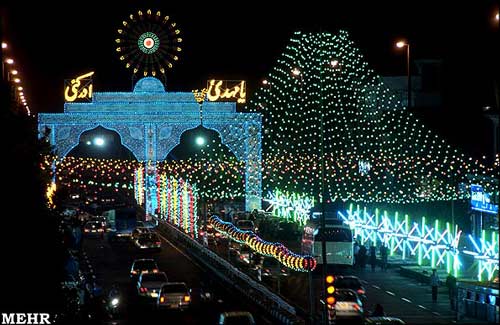Thou shalt use energy saving bulbs
 Iran’s Tabnak news site had an interesting story today about a letter they wrote to an ayatollah asking him to justify using huge light displays at religious festivals while Iran was facing an energy crisis and power cuts. Here’s my rough translation of his response:
Iran’s Tabnak news site had an interesting story today about a letter they wrote to an ayatollah asking him to justify using huge light displays at religious festivals while Iran was facing an energy crisis and power cuts. Here’s my rough translation of his response:
Response of Ayatollah Mokaram Shirazi:
It is right that devotees of the Imam use energy-efficient bulbs and light-strings and make other arrangements so as not to exert a pressure on other worshipers due to power cuts while they are paying homage to the blessed birth; they should also use less energy at home in order to compensate for the light displays.
They even reproduced his handwritten response (below). That is some fantastic handwriting. 

